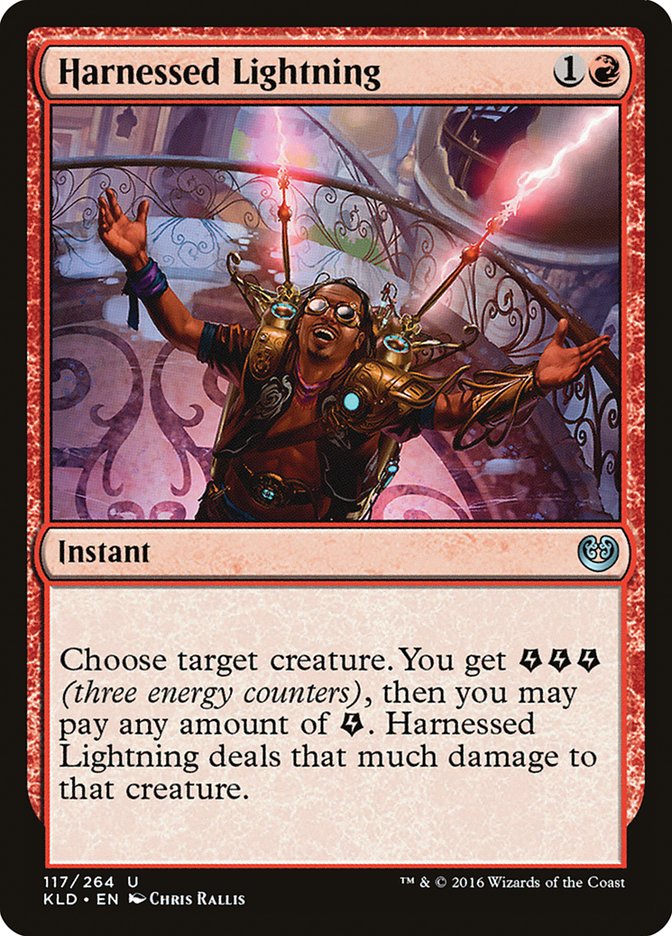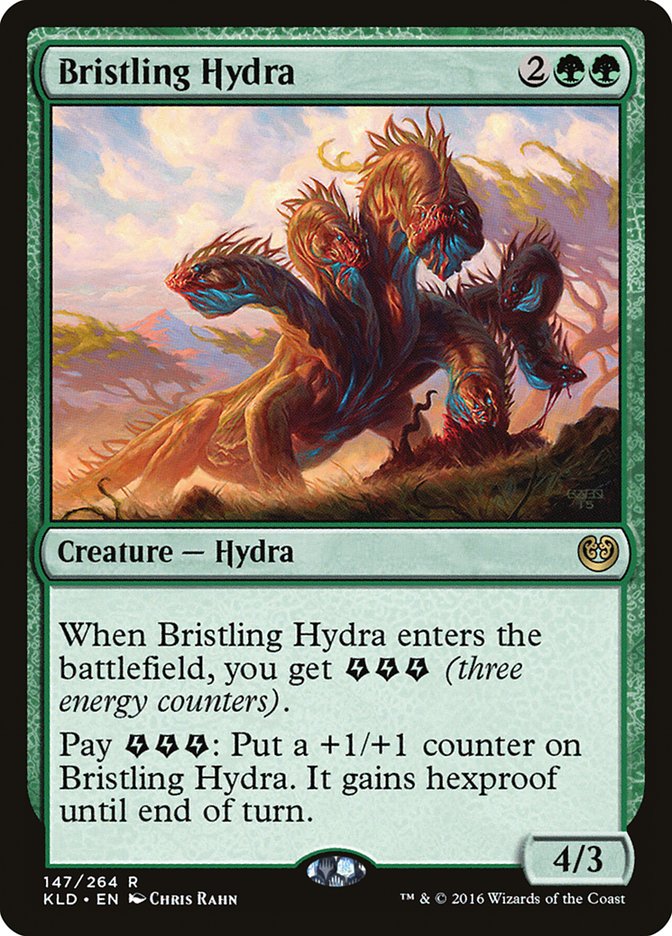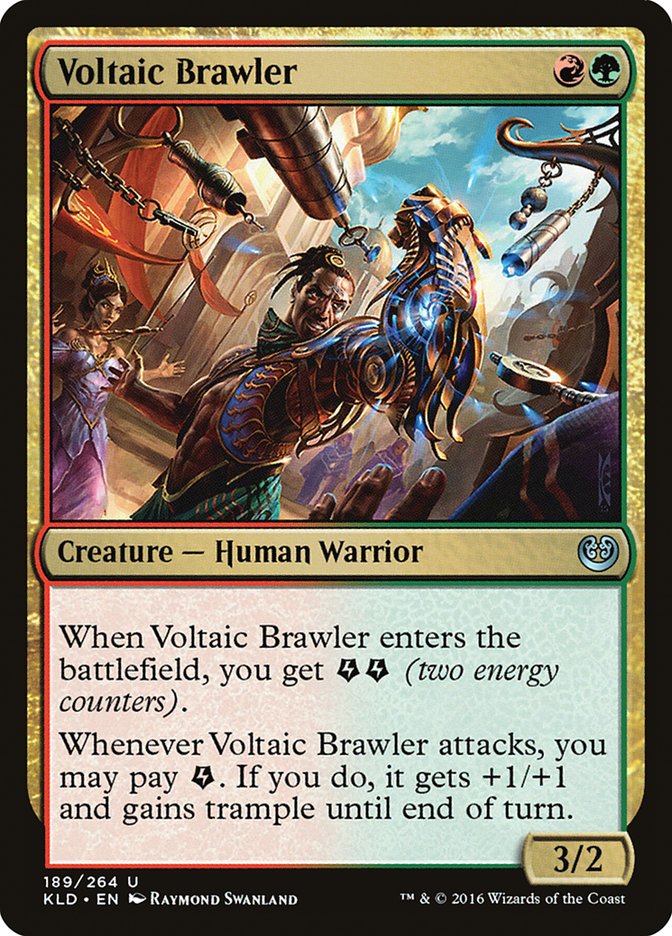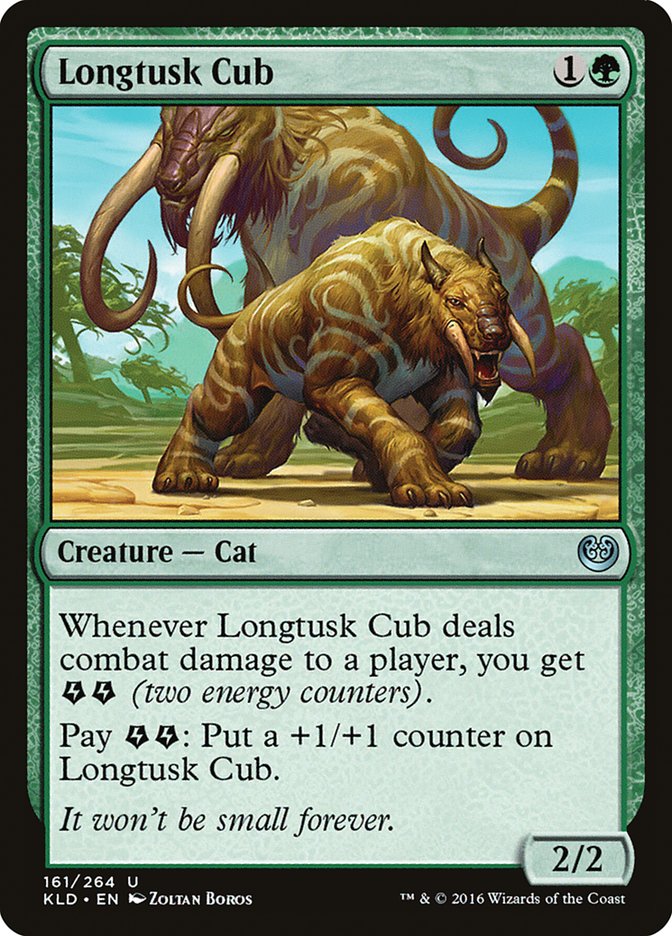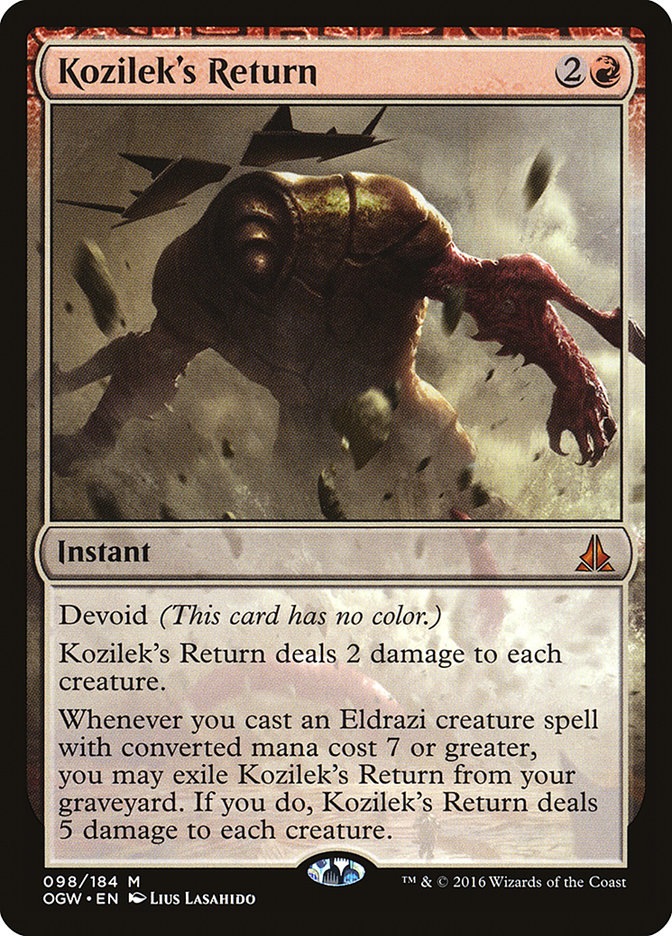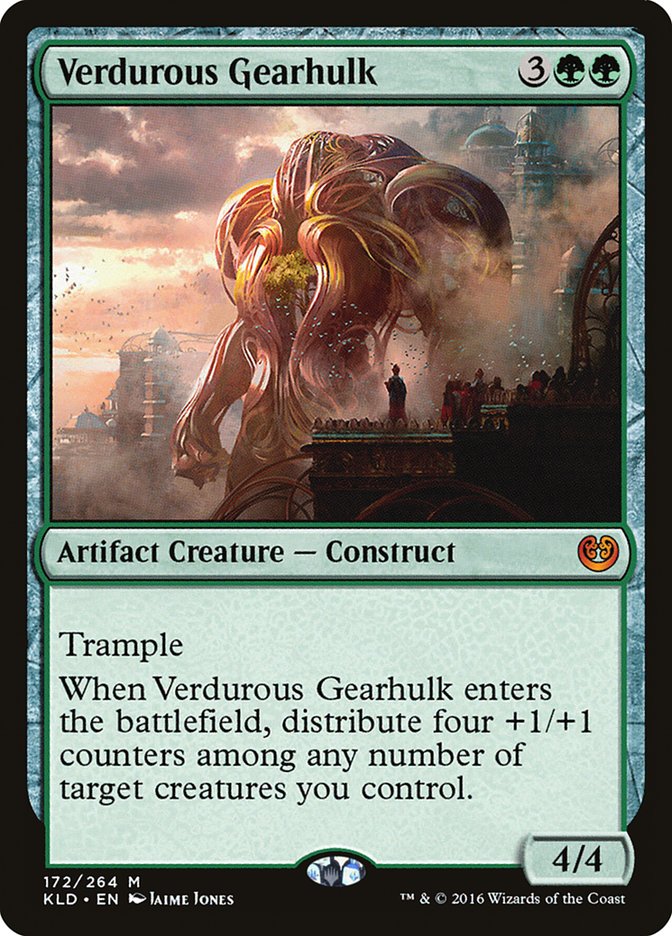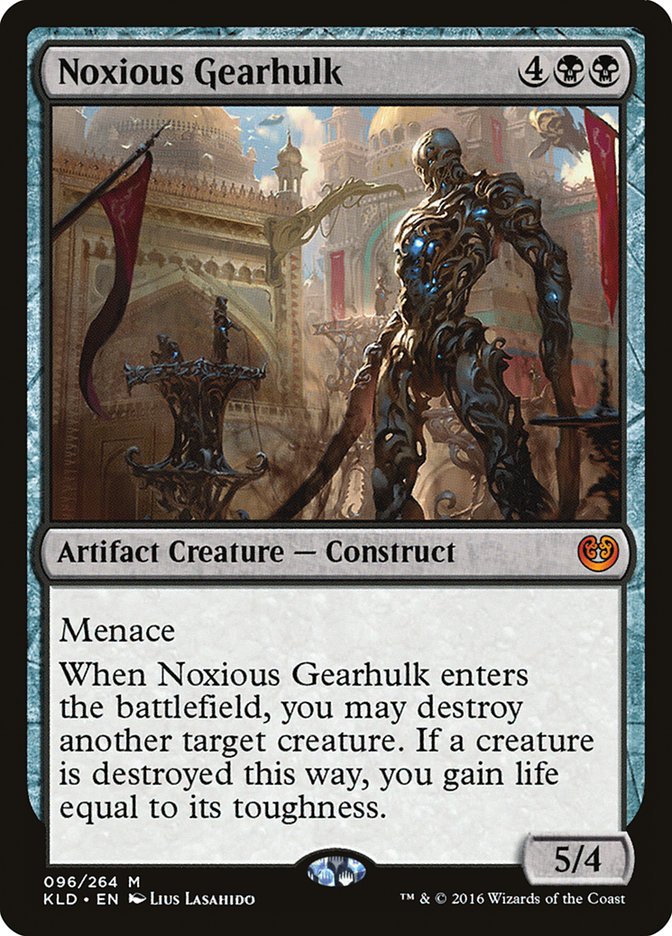I love a new set as much as the next player, assuming the next player also spends a vast majority of their time thinking about Magic and loves new sets more than almost anything, but I’m particularly excited about Kaladesh.
As someone who grew up on early Final Fantasy games, I can definitely get into a loosely steampunk but not Victorian setting (even if I do happen to also like the full Victorian steampunk aesthetic). I also loved the bright, colorful, cheerful feel of Lorwyn (and was really disappointed by the move to Shadowmoor), so as much as I appreciate the feel of Innistrad (which I’m definitely less excited about after it got all Eldrazi-fied anyway), I’m really happy to move to a vibrant color palette of a world that just looks fun while incorporating a lot of the best parts of Ravnica (an awesome, giant city that just looks sweet to imagine visiting).
I love doing an artifact set that isn’t colorless in appearance, like how Mirrodin is all greys and browns and silvers–artifacts have a long history of being “mono-brown,” but I just think bright cards are more fun to look at and play with.
Anyway, as excited as I am for the look and feel of Kaladesh, it’s trivial compared to how excited I am about the mechanics–well, Energy in particular. Vehicles and fabricate seem fine and all, but Energy is amazing.
It’s strange to think that I want to add a currency system on top of a game that already has a resource system, but I love giving Magic a resource pool that doesn’t empty. With mana, you’re encouraged to spend as much as you can every turn, because whatever you don’t spend just gets wasted. There’s never a consideration about whether you should be saving your resources, but I’m the kind of person who likes saving money more than spending it, so I love that I get to think about whether I want to save my Energy for later rather than spending it for an immediate benefit.
Energy adds a huge number of decision points and introduces a kind of decision that Magic doesn’t offer a lot of, and that’s awesome, but still, my enthusiasm goes way beyond that. There’s an entire extra dimension to Energy that’s awesome, which is the brilliance of making most Energy cards both create and spend Energy.
What this design decision means is that some cards will be played because they’re good at making Energy and others will be played because they’re good at spending Energy, but sometimes, the cards that you play that are good at making Energy and bad at spending it, that have abilities you couldn’t really see yourself using? Well, those options will still be there, which allows for corner cases where weird abilities that wouldn’t normally be worth including in your deck come up and you get to make sweet plays with Energy you’d intended to do something else with in deck construction because the right moment just happened to come up. I love that most Energy uses don’t cost mana and happen at instant speed–it means that these opportune moments can just pop up at any time, and you have to be ready to use your resources in ways you didn’t plan, but knew to look for.
The complexity of it all is staggering. If a player has several cards that can spend Energy on the battlefield, they’ll have a lot of options available to them at all times, but they’ll be able to use few at once. For an unprepared opponent, this means there are just a bunch of extra options they need to play around, and because so many cards have two abilities, one to make Energy and one to spend it, they’ll all have a lot of words. Basically, I’d expect this set to be overwhelming for new players in a way that makes me surprised it ever saw print, but for those of us who are familiar enough with the game, and expect to be familiar enough with the cards to handle it, it should create an amazingly rich play experience. It’s almost like getting to play with a set like Modern Masters (which has above-normal complexity to appeal to enfranchised players) for a full cycle. Sign me up!
So the premise and broad execution are great, but what about the cards themselves? With a mechanic this deep, it can be hard to get them right, and because the mechanic is only interesting if a critical mass is achieved in order to allow a deck to be based around Energy, there’s a good chance that, like Splice onto Arcane (or, to a lesser extent, proliferate), the mechanic will be mostly consigned to Limited play. Given how excited I am to play with it, I really hope Wizards went all-out on pushing the mechanic for Constructed play, and not just for one or two decks in a couple of colors but supporting a variety of strategies across all colors. I’m ready to be disappointed, because that’s hard to accomplish with only a set or two, but based on what we’ve seen, I’m cautiously optimistic–basically, there’s a bunch of awesome stuff already, but they do have something of a history of leading with all the best stuff.
Still, after seeing Aetherworks Marvel, I expected the mechanic to be best in control decks that have time to build Energy slowly, but now, having seen cards like Voltaic Brawler and Longtusk Cub, it’s clear that this mechanic has come out for aggressive decks.
In fact, I think the best Energy cards for Constructed so far are Voltaic Brawler and Harnessed Lightning (and the fact that those are both only uncommons makes me think there could still be a lot to come).
Voltaic Brawler seems amazing to me: a two-mana creature that attacks as a 4/3 with trample. Yes, it only does that for the first two turns (unless you make more Energy to spend on it), but that’s only a problem if this thing sticks around to attack a third time. It’s very rare that you attack twice with a 4/3 trample creature and it survives to attack a third time and the game hasn’t already basically been decided. The more likely outcome, by far, is that your opponent kills this before it attacks a second time, and you’re up at least one Energy after having cast an excellent threat.
The best part? This is an aggressive creature that isn’t scared of Reflector Mage–it costs less mana and attacks over it, and if Reflector Mage bounces it, your opponent still spent more mana than you and you’re up two more Energy on the deal.
As for Harnessed Lightning, it’s easy to look at it as a Lightning Strike that can’t target players but in exchange sometimes nets you Energy when you kill a smaller creature, but it’s so much more than that. Red has a huge problem with high-toughness creatures. It’s very rare that red gets a removal spell that can deal more than three or four damage at a reasonable cost, so while you’re certainly hoping to gain Energy off your more restricted Lightning Strike, the times you’ll actually be happiest about the card are when it allows you to kill something like an Archangel Avacyn or bigger. This is such a powerful addition to red’s capabilities as a color that it’s hard to imagine it not being a defining card, and that really pushes people to find other playable ways to use Energy so that they can both power Harnessed Lightning further when they need to and profit from the extra Energy it leaves behind in other spots.
We’re coming out of a long period where red has been horrible. Reflector Mage and Kozilek’s Return have been devastatingly oppressive to the aggressive strategies one usually looks for in red, and the cards to fight back haven’t really been there. Incendiary Flow was the first step in bringing red’s identity back, but I think Kaladesh will bring it back in a big way. Dragons of Tarkir and Magic Origins contributed amazingly little to red in Standard. Cards that were once good, like Abbot of Keral Keep and Exquisite Firecraft, haven’t been players for a long time, and Fiery Impulse is easily replaced with Galvanic Bombardment. Meanwhile, in addition to adding Harnessed Lightning, which should end up being one of the premier removal spells of the format, we add, of course, Chandra, Torch of Defiance.
I’m sure that everyone else will go into great detail about how fantastic this card is, and I certainly wouldn’t think to argue otherwise, but at the same time, I don’t think I’ll do the best job of espousing its virtues. The card isn’t my style. It’s too blunt. Generically good anywhere, and it takes no finesse. I’d rather leave it to someone who really loves the card. Suffice it to say that it’s powerful, and it will give people a reason to play red.
As far as what all of this means in context, I’m hoping aggressive strategies, particularly red aggressive strategies, are able to keep Emrakul and especially Kozilek’s Returns decks in check. Kozilek’s Return is a scary card, as it makes trying to win with creatures a risky proposition, especially without Collected Company to reload at the end of a turn after Kozilek’s Return triggers from the graveyard. It’s particularly problematic when combined with Emrakul, the Promised End, as Emrakul makes it hard to try to play a long game, so the pair create a powerful combination of restrictions, allowing for very narrow design space as a deckbuilder.
While in a perfect world we might see easy, reliable graveyard hate to attack Kozilek’s Return, even that wouldn’t be enough for some decks. It’s possible the real answer to Kozilek’s Return will be Vehicles. Vehicles allow a player to continue extending their battlefield in the mid-game without further exposing themselves to Kozilek’s Return (assuming they can play around an Elder Deep-Fiend triggering it while their Vehicle is active). This is an extremely important piece of counterplay that could potentially have dramatic effects on how oppressive sweepers end up being in the format. From what we’ve seen, based on cards like Fleetwheel Cruiser and Ovalchase Dragster, they definitely look like they’re designed to punish decks that are leaning too heavily on sorcery-speed sweepers or sorcery-speed removal in general.
Furthermore, we have the Gearhulk cycle, or, at least, what I imagine will likely end up being a full cycle. These cards seem reminiscent of the Titans from Magic 2011. When those first came out, it wasn’t clear what kind of deck they’d fit into–we didn’t have decks designed to play six-mana creatures because there hadn’t been six-mana creatures worth playing. Similarly, it may not be obvious how we should use the Gearhulks, or whether they’ll have a place in Standard, but they look powerful enough to make a place for themselves.
Essentially, while I’m worried about the possibility that Emrakul / Kozilek’s Return decks will dominate Standard, I’m only worried about it because I think it would be terrible if it happened, not because I think it’s likely to happen. This upcoming Standard format will not be Standard minus Collected Company and the other cards that are currently seeing play; this Standard will be something completely new, as Kaladesh is going to matter in a big way.
As for Modern, I can’t wait to start gaining one life a turn. Beyond that, who knows?


